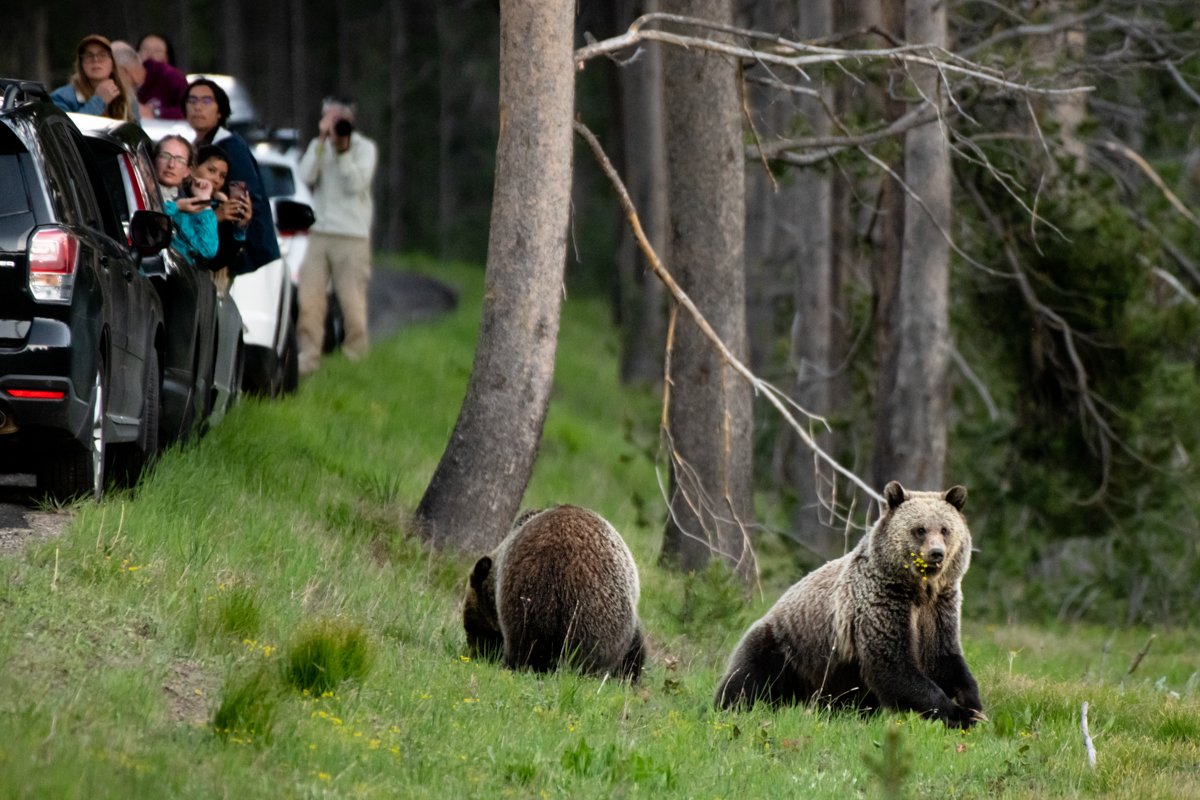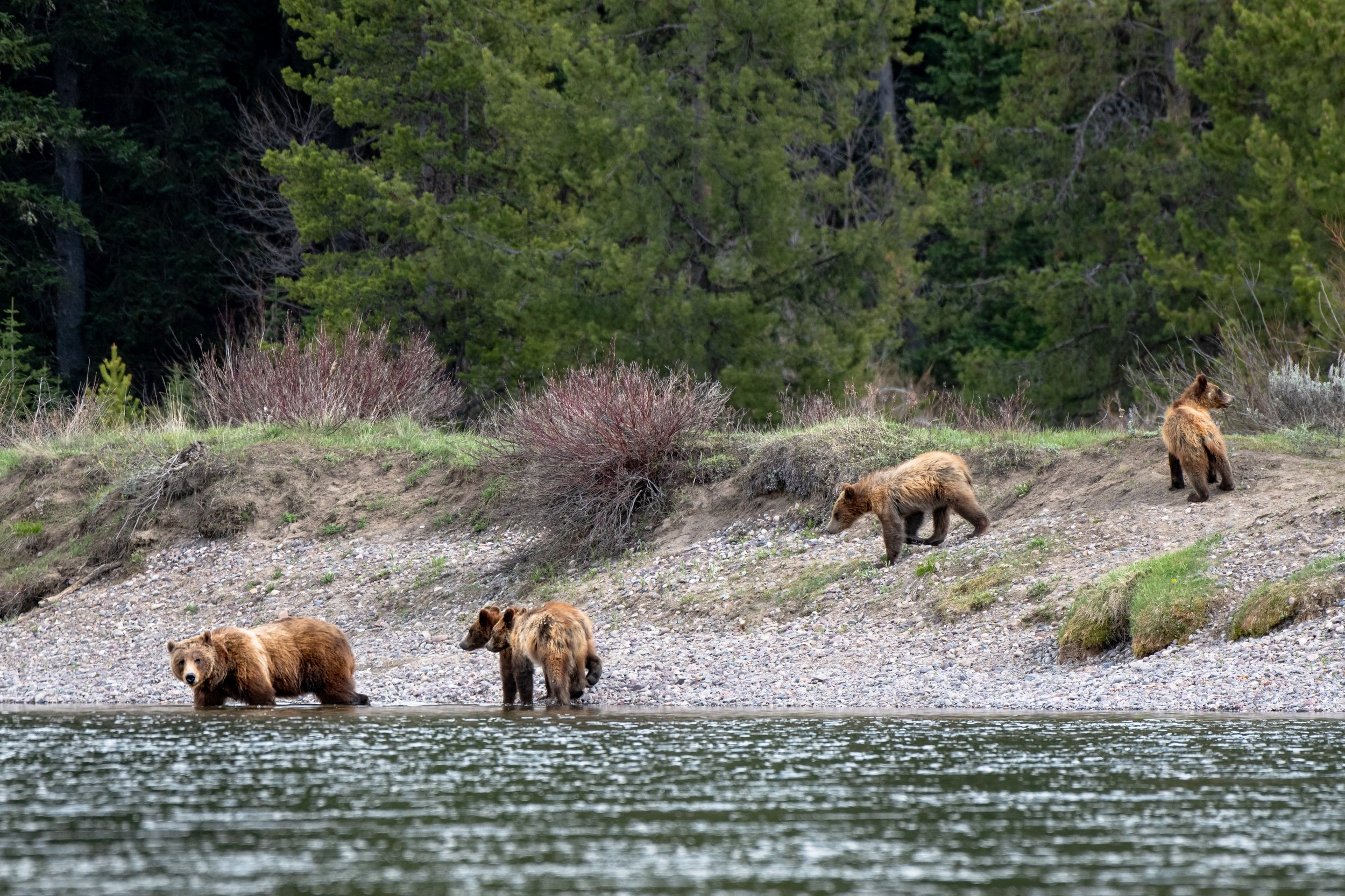Grizzlies that find their way outside of the National Park are at risk of getting into attractants left out by people.
For many years Grizzly Bears (Ursus arctos horribilis) in the Greater Yellowstone ecosystem have relied on National Park visitors as a means of survival. With cub mortality rate around 50% many Grizzly sows have learned that by staying near roads their cub survival rate has increased. Male Grizzlies, who often seek to kill the young cubs in order to bring the females back into estrus to mate, tend to avoid the roads. Therefore many Grizzlies including the famous Grizzly 399 rely on these roads to keep their cubs alive.
As an Endangered Species, Grizzly Bears in the Greater Yellowstone Ecosystem depend on breeding females to produces offspring about every three years and carry on their genetic diversity among the population.
As popularity among National Parks, such as Yellowstone and Grand Teton National Park grows and visitor numbers continue to rise; pressure on these road-side bears has begun to hit a tipping point. When grizzlies move outside of the National Park boarders protections for these endangered species pass into other departments, such as Wyoming Department of Fish and Wildlife.
Just outside Grand Teton National Park in the Bridger-Teton Togwotee Mountain pass is Grizzly 863, commonly known as Felicia. As a road-side bear living outside the protection of the National Park she has drawn lots of attention from photographers and wildlife viewers who seek to have an experience with a wild bear and her two small cubs. With traffic growing to as many as 75 cars at a time, pulled off the highway illegally, the situation has become a danger to both wildlife viewers and the traffic that is driving through the pass.
Wyoming Department of Fish and Wildlife have issued a statement that urges wildlife viewers to stay clear of the Bridger-Teton Togwotee mountain pass as they plan to haze Grizzly 863 and her two cubs deeper into the woods. If their attempts fail they will either relocate the bears or remove them entirely from the population.
Wildlife advocates have created a petition on change.org urging WDFW not to destroy a healthy non-aggressive breeding female from an endangered species.
While Grizzly 863 fights for her life against the traffic on Bridger-Teton Togwotee pass other Grizzlies are finding their way into the town of Jackson Hole. Drawn to the food attractants left out by people, such as unsecured garbage, compost, fruit trees and beehives, bears who get into food in town either end up being relocated or euthanized.




















